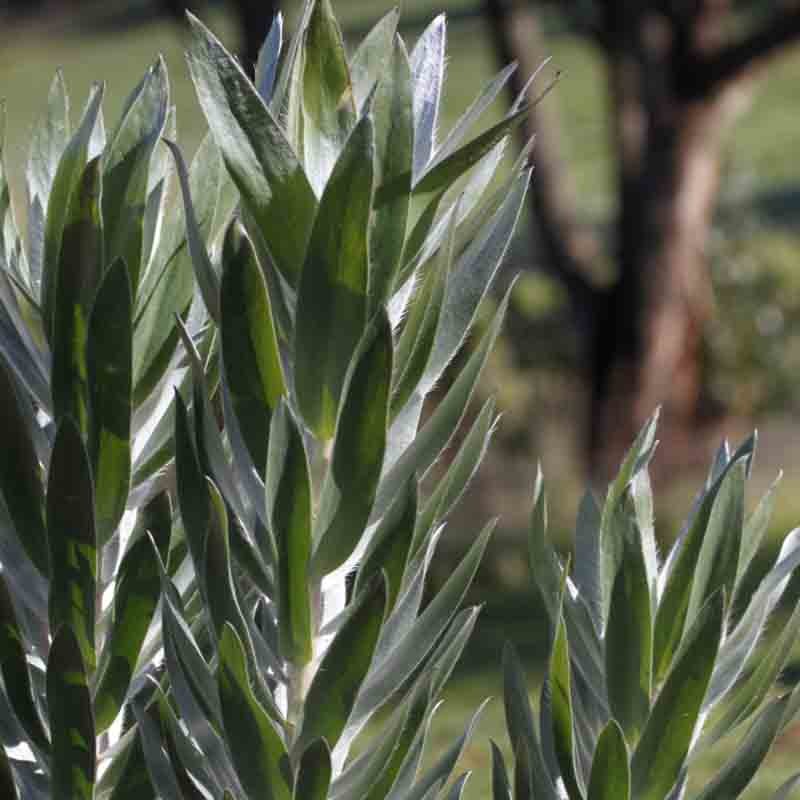
Leucadendron Silver Tree 14cm Garden World Nursery
Leucadendron argenteum is an erect, well-proportioned, ornamental tree, 7 - 10 m tall, with a stout trunk and thick, grey bark. The upright branches are covered with large lance-shaped leaves, up to 150 x 20 mm, which overlap each other up the stem, concealing the thick branches.
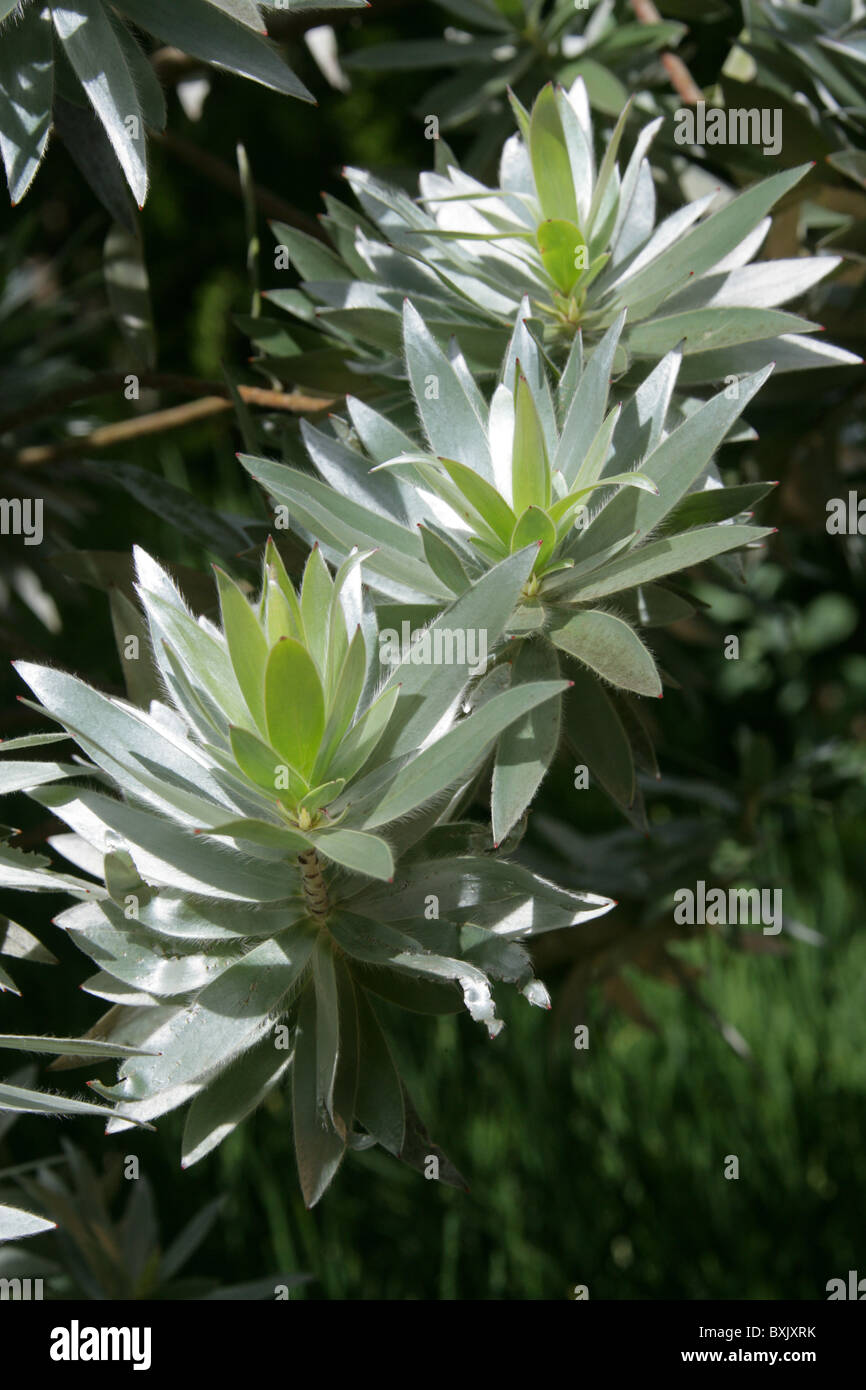
Silver tree male leucadendron argenteum hires stock photography and images Alamy
Leucadendron argenteum, silver leaf tree, Afrikaans Witteboom, or Afrikaans Silwerboom) is an endangered plant species in the family Proteaceae, which is endemic to a small area of the Cape Peninsula, South Africa.
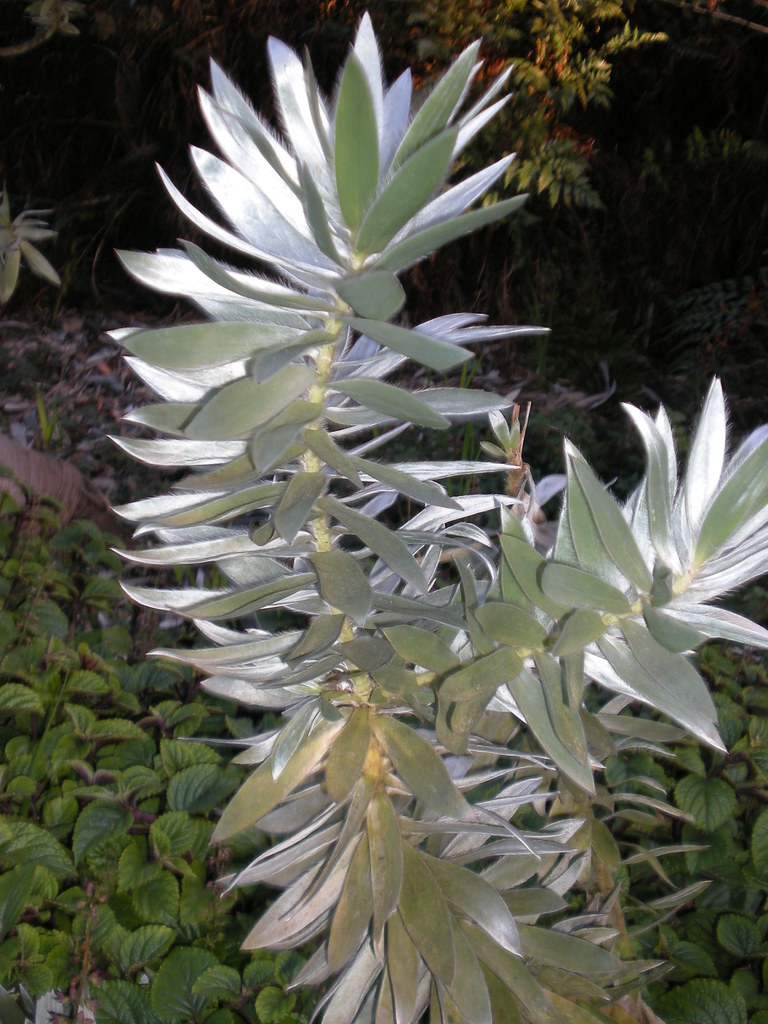
Silver Tree / Leucadendron argenteum Cape Province Garden… Flickr
Leucadendron argenteum is a broadleaf evergreen tree or shrub with blue and green foliage. It can grow 6 FT - 20 FT - wide, 20 FT - 30 FT - tall. It contributes glossy texture to the garden. To grow well, it prefers sun and regular water. Grows best in well-drained, rich, acidic and gritty soil. In need of something heat tolerant? This may be a good option. #distinctive bark, #small tree, #.

Leucadendron Silver Tree Proteaflora
Leucadendron Argenteum or silver tree is a popular ornamental plant known for its attractive silver foliage and bright red or yellow flowers. To propagate a silver tree, you can take stem cuttings from an existing plant and root them in soil or water. Here is a general guide to follow: Choose a stem cutting from a healthy, mature silver tree.
Trees of Santa Cruz County Leucadendron argenteum SIlver Tree
Silver tree ( Leucadendron argenteum) is one of eighty species of this dioecious genus. It belongs to a family (Proteaceae) of great antiquity, fossils dating back to the time when the great southern continent Gondwanaland started splitting apart. Nowadays, the family is represented on all its daughter continents except Antarctica.

Leucadendron argenteum / Silver Tree by Van in LA via Flickr foliageplants silver foliage p
The incredible Silver Tree - Leucadendron argenteum - is a unique rarity with shiny foliage that looks metallic and feels like silk! Photographs just don't do this plant justice, because its chrome-like texture is hard to capture in pictures. This Protea relative is an endangered species that is found in only one spot in South Africa, on Table.
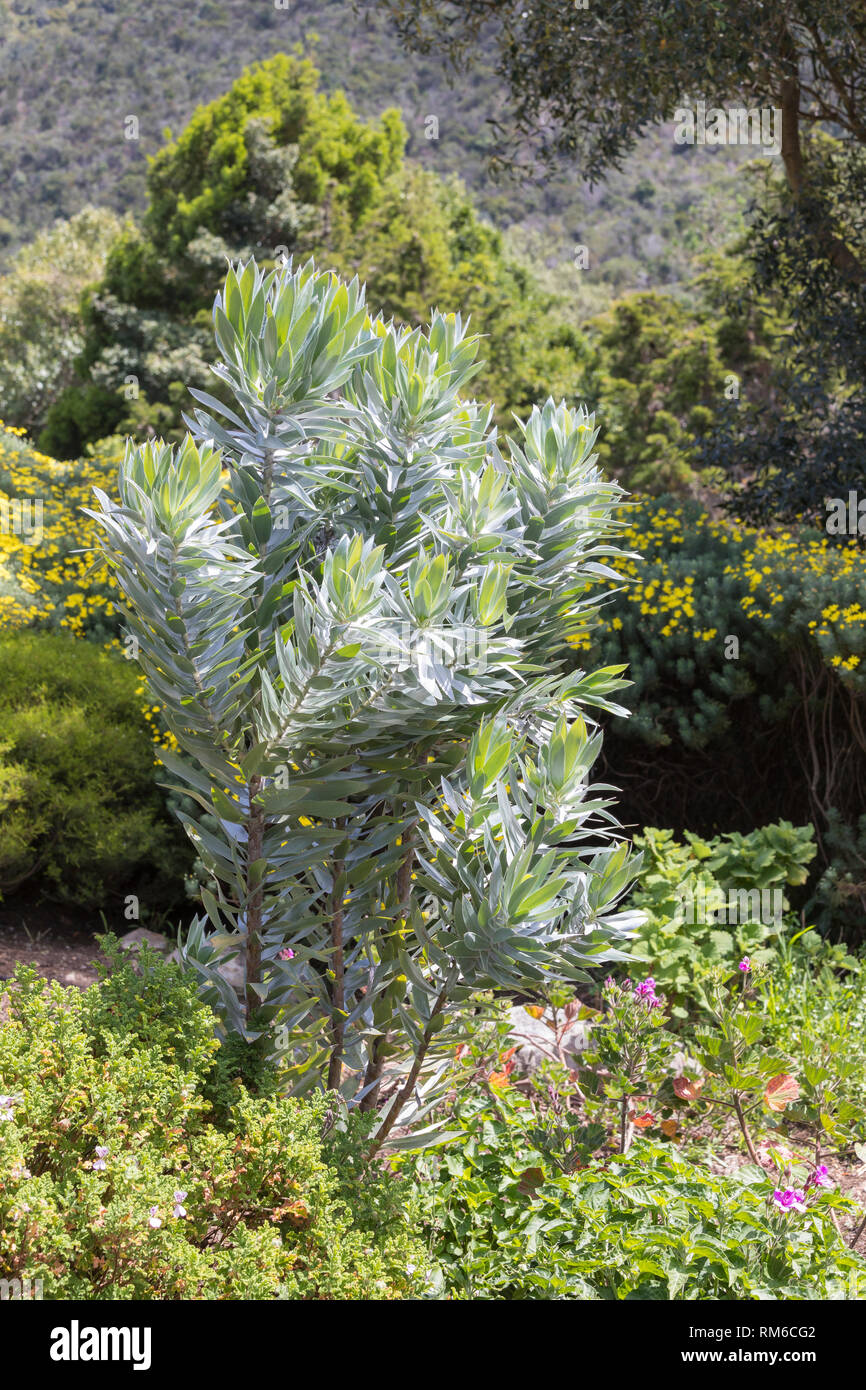
Rare Silver Tree, Leucadendron argenteum, which only grows wild on the Cape Peninsula, Cape Town
Description. Leucadendron Argenteum, commonly known as Silver Tree or Silver Leaf Tree, is a stunning, evergreen shrub native to South Africa. It belongs to the Proteaceae family and is popular for its striking silvery-white foliage and bright yellow flowers.
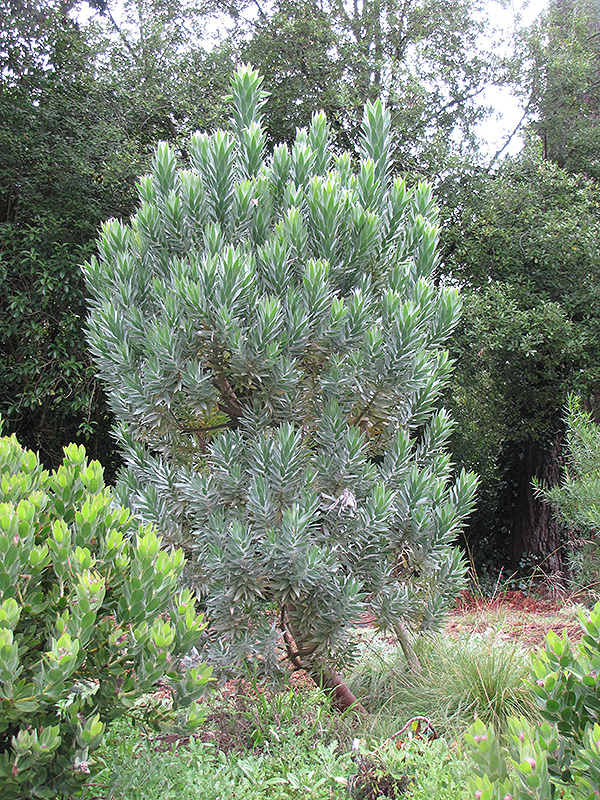
Silver Tree (Leucadendron argenteum) in Frankfort Chicago St Johns Tinley Joliet Orland Illinois
Leucaderon Care: How to Grow & Care for the Silver Tree By Erica Puisis | Updated on March 29, 2021 Leucadendron varieties are arguably the brightest flowering shrubs you'll ever find. If you're living in a warm region, growing this shrub would be such a stellar idea since it's drought tolerant and low maintenance.

Silver Tree Leucadendron Argenteum Stock Photo Image of kaapstad, fynbos 149266322
Leucadendron Silver Tree. Famed for its spectacular foliage, Leucadendron Argenteum or sometimes called "Cape Silver Tree" has wonderful large, broadly pointed green leaves covered in silver silken hairs. These leaves create a vivid display as they shimmer in the wind. What is Silver Tree's Secret? You don't know whether it is a male or a.
Trees of Santa Cruz County Leucadendron argenteum SIlver Tree
Silver Tree - Leucadendron Varieties - Proteaflora Leucadendron Silver Tree is a fast growing small tree with year round spectacular silver foliage. Ideal for cut flowers and superb in the home garden.
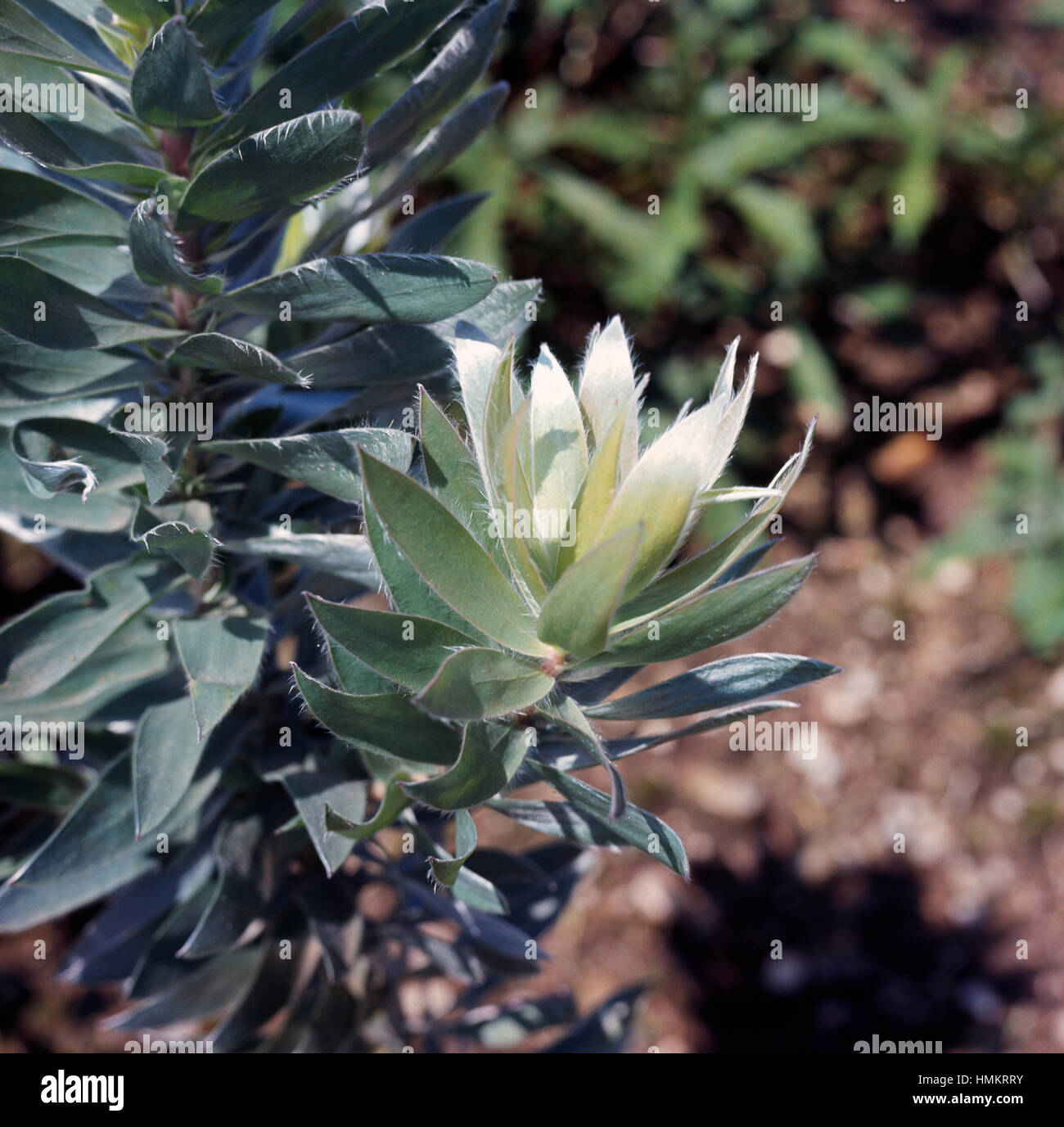
Silver Tree, Silver Leaf Tree, Witteboom, or Silwerboom (Leucadendron argenteum), foliage
Info Species argenteum (ar-JEN-tee-um) Info Synonym Protea argentea Sun Exposure Full Sun Foliage Grown for foliage Evergreen Succulent Height 15-20 ft. (4.7-6 m) 20-30 ft. (6-9 m) 30-40 ft. (9-12 m) over 40 ft. (12 m) Spacing 10-12 ft. (3-3.6 m) Hardiness USDA Zone 9b: to -3.8 °C (25 °F) USDA Zone 10a: to -1.1 °C (30 °F)

PlantFiles Pictures Leucadendron Species, Silver Tree (Leucadendron argenteum) by htop
Leucadendron argenteum|silver tree/RHS Gardening Trees Leucadendron argenteum silver tree Upright, pyramidal to columnar tree with robust stems densely covered with narrow, pointed, shiny, silver-hairy leaves up to 15cm long. In spring and summer produces terminal, spherical flower heads, yellow-green on male plants, greenish silver on females.

Leucadendron argenteum (Silver tree, Silver leaf tree) Front yard plants, Australian native
Approximately 90% of the timberland is taken up by 11 tree species. They are, in addition to the tree species named above, the common spruce, common pine, purple beech, sessile oak and European oak, the tree species common birch, common ash, black alder, European larch, Douglas fir and the sycamore maple. The other 40 tree species share the.
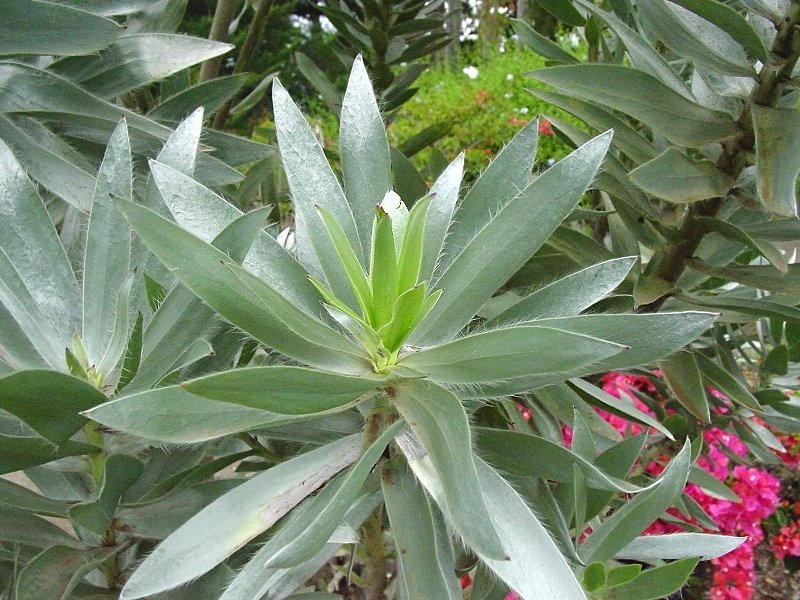
Leucadendron Argenteum, Silver Tree 2.5Ltr Greenleaf Nurseries
Leucadendron argenteum. Previous Name: Protea argentea. SA Tree No. 77. Common names: (Afr) Brandhout, Silwerboom, Witteboom. (Eng) Cape Silver Tree, Silver Tree, Silver leaf tree. Family: Proteaceae (Protea family). Members of this family occur mainly in the southern hemisphere. Universal characteristics are few.
Trees of Santa Cruz County Leucadendron argenteum SIlver Tree
Details Biological Name: Leucadendron argenteum Common Name: Silver Tree Family: Proteaceae Origin: South African Exposure: Full Sun Irrigation: Drought tolerant once established Frost: Light Frost Tolerant 28F (-2C) Soil: Well-drained to poorly drained soils Flower Color: Silver Cone Flower Time: Height: 25' Width: Variable See also. Tree

PlantFiles Pictures Leucadendron Species, Silver Tree (Leucadendron argenteum) by Kell
Leucadendron Argenteum, the shimmering Silver Tree, is one of South Africa's iconic trees. It was first mentioned in a manuscript of the early 17th century when dense stands of it covered large areas of the Cape Peninsula.